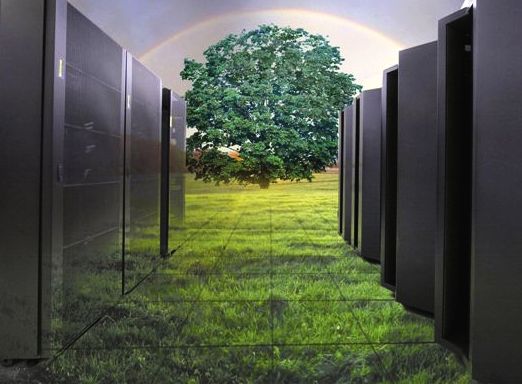Microsoft Partners University For Data Centre Energy Efficiency

Microsoft teams up with Texan university to explore green ways to meet data centre energy needs
Microsoft is well aware of the growing energy demands on data centres, in order to satisfy the cloud computing market.
Indeed, tech companies on the whole are increasingly turning to renewables and energy-efficient technologies to decrease their reliance on old, power grids that burn fossil fuels to generate electricity.
Energy Consumption
To this end, Microsoft announced 16 April that it had partnered with the University of Texas at San Antonio to help wean data centres off carbon-producing energy sources.
 “We are forming a three-year agreement with UTSA to research and develop distributed generation technologies that will transform how data centres consume energy,” announced Brian Janous, director of Energy Strategy at Microsoft’s Global Foundation Services unit. Microsoft researchers and students will be pursuing efficient “fast-start generation” technologies, he said.
“We are forming a three-year agreement with UTSA to research and develop distributed generation technologies that will transform how data centres consume energy,” announced Brian Janous, director of Energy Strategy at Microsoft’s Global Foundation Services unit. Microsoft researchers and students will be pursuing efficient “fast-start generation” technologies, he said.
Fast-start generation describes energy technologies that kick in quickly when a primary power source fails or can’t keep up with increased demand. Janous explained the project will look into devices like “micro-turbines to replace the diesel generators that are used during times of peak demand and grid outages.”
Microsoft is also donating $1 million (£596m) to the school’s Texas Sustainable Energy Research Institute (SERI), which is headed by former Sandia National Lab Vice President Dr. Les Shephard. According to the group’s Website, SERI provides “systems solutions that pursue novel opportunities for technology insertion to reduce costs, improve reliability and assure responsible environmental stewardship that contributes to our energy future.”
Janous revealed that the company had “good reason” for partnering with the university. The company opened a data centre there in 2009, and “was one of the first in the industry to employ technologies like using wastewater for cooling to reduce energy consumption,” he said. CPS Energy, the city’s utility, “is the largest publicly owned purchaser of wind power in the country, with 1,059 megawatts (MW) of wind-generated electricity in commercial operation.”
Complementary Approach
Microsoft isn’t expecting to replace centralised electrical grids, he added. Rather, the company sees the approach “as a complement to the traditional centralised model, if it is deployed in a manner that is optimised to the needs of the grid in concert with grid operators and utilities.”
SERI’s and Microsoft’s goals align with those of cloud data centre operators. Janous said that, together, the organisations are “focused on hastening the transition to a future where widespread deployment of distributed generation will reduce energy losses, improve reliability and minimise the need for costly investments in new infrastructure.”
Texas is emerging as a major focus of Microsoft’s green technology efforts. This latest move follows last year’s big wind power purchase deal. The company agreed to buy 100 percent of the power generated by the Keechi Wind Farm for 20 years, ensuring that the project gets off the ground 60 miles northwest of Fort Worth.
Do you know all about renewable energy? Take our quiz.
Originally published on eWeek.